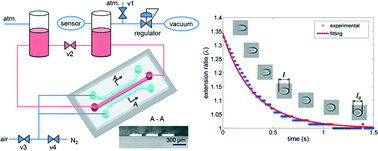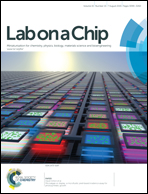Mechanical differences of sickle cell trait (SCT) and normal red blood cells†
Abstract
Sickle cell trait (SCT) is a condition in which an individual inherits one sickle hemoglobin gene (HbS) and one normal beta hemoglobin gene (HbA). It has been hypothesized that under extreme physical stress, the compromised mechanical properties of the red blood cells (RBCs) may be the underlying mechanism of clinical complications of sickle cell trait individuals. However, whether sickle cell trait (SCT) should be treated as physiologically normal remains controversial. In this work, the mechanical properties (i.e., shear modulus and viscosity) of individual RBCs were quantified using a microsystem capable of precisely controlling the oxygen level of RBCs' microenvironment. Individual RBCs were deformed under shear stress. After the release of shear stress, the dynamic cell recovery process was captured and analyzed to extract the mechanical properties of single RBCs. The results demonstrate that RBCs from sickle cell trait individuals are inherently stiffer and more viscous than normal RBCs from healthy donors, but oxygen level variations do not alter their mechanical properties or morphology.


 Please wait while we load your content...
Please wait while we load your content...